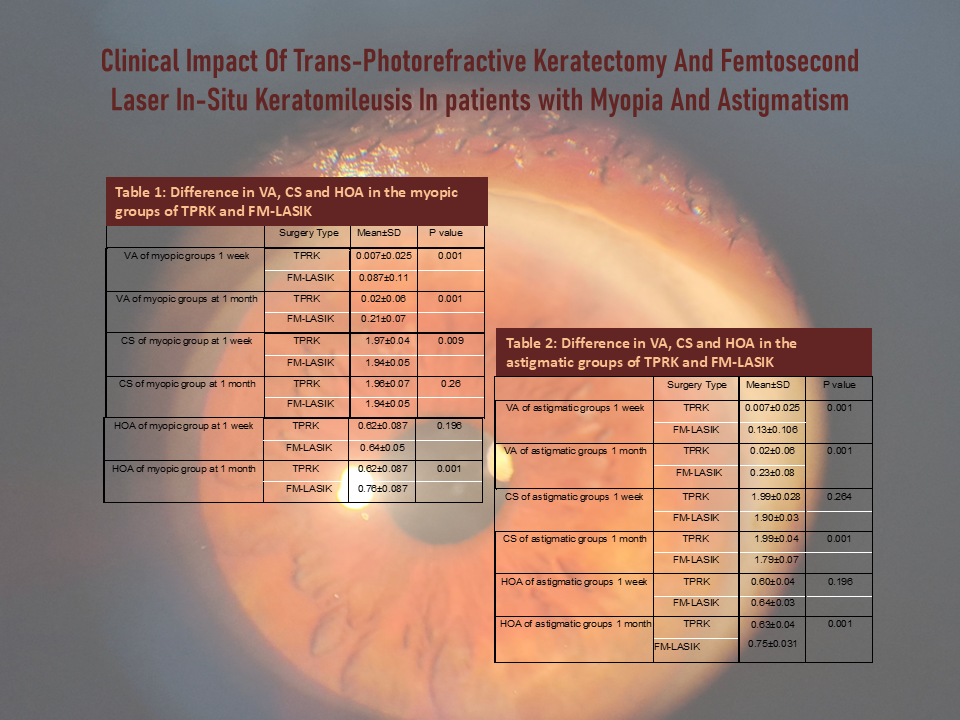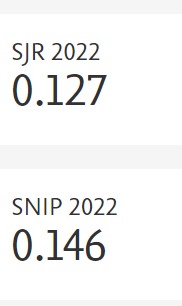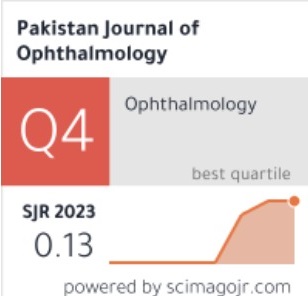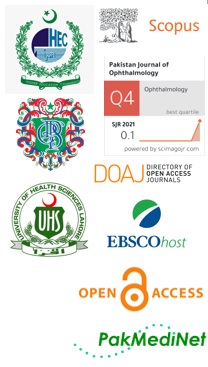Clinical Impact of Trans-Photorefractive Keratectomy and Femtosecond Laser In-Situ Keratomileusis in patients with Myopia and Astigmatism
Doi: 10.36351/pjo.v41i3.2015
DOI:
https://doi.org/10.36351/pjo.v41i3.2015Abstract
Background: Refractive surgery aims to treat refractive errors by altering the cornea's shape using excimer laser techniques, thereby reducing stromal thickness to focus light rays on the retina.
Aim: This study aimed to assess and compare Visual Acuity (VA), Contrast Sensitivity (CS), and Higher Order Aberrations (HOA) in myopic and astigmatic patients undergoing different refractive surgeries.
Methods: Conducted at the Amer Eye Hospital Network in Rawalpindi, this study comprised 60 patients (120 eyes). Two groups were examined: 30 Trans-PRK patients (15 myopic, 15 astigmatic) and 30 Femtosecond LASIK patients (15 myopic, 15 astigmatic).
Results: Significant differences (P < 0.05) were found in improving VA in both myopic and astigmatic patients’ post-surgery. Trans-PRK yielded superior results compared to Femtosecond LASIK (P < 0.05) in both cases. Contrast sensitivity decreased significantly (P > 0.05) after both surgeries in myopic and astigmatic patients, with Trans-PRK showing better results. Moreover, both operations increased HOAs significantly (P > 0.05) in myopic patients, with Trans-PRK outperforming Femtosecond LASIK.
Conclusion: While both Trans-PRK and Femtosecond LASIK improved VA, reduced CS, and increased HOAs, Trans-PRK demonstrated superior outcomes over Femtosecond LASIK in this study.

Downloads
Published
How to Cite
Issue
Section
License
Copyright (c) 2025 Muhammad Zubair Nazar, Prof.Dr. Khalid Mahmood, Khalid shahbbir, Muhammad Asrar Yousaf, saad ullah, Awon Abbas Malik

This work is licensed under a Creative Commons Attribution-NonCommercial 4.0 International License.






